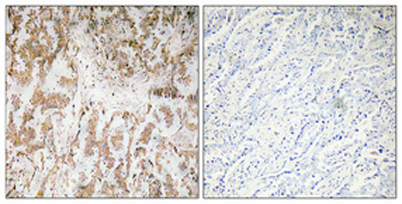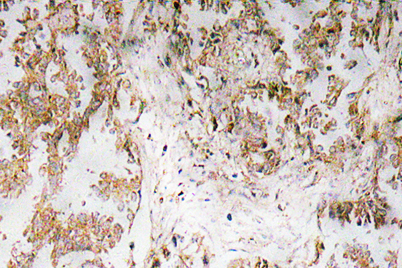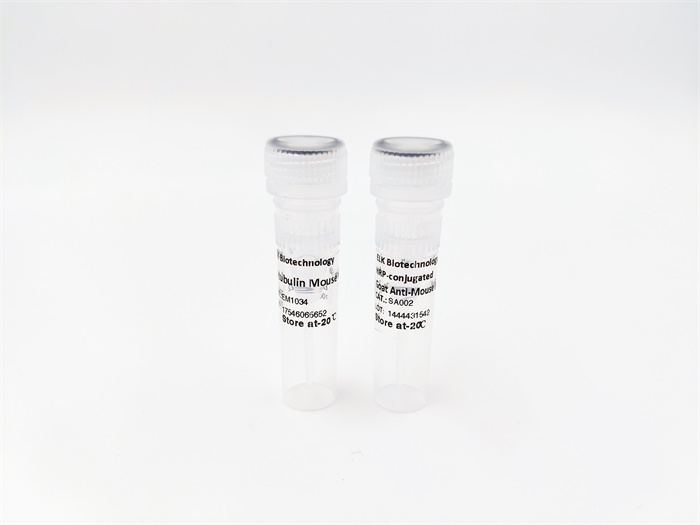| Product name: |
IL-1α rabbit pAb |
| Reactivity: |
Human;Mouse;Rat |
| Alternative Names: |
IL1A; IL1F1; Interleukin-1 alpha; IL-1 alpha; Hematopoietin-1 |
| Source: |
Rabbit |
| Dilutions: |
Immunohistochemistry: 1/100 - 1/300. ELISA: 1/10000. Not yet tested in other applications. |
| Immunogen: |
The antiserum was produced against synthesized peptide derived from human IL-1alpha. AA range:8-57 |
| Storage: |
-20°C/1 year |
| Clonality: |
Polyclonal |
| Isotype: |
IgG |
| Concentration: |
1 mg/ml |
| Molecular Weight: |
31kD |
| GeneID: |
3552 |
| Human Swiss-Prot No: |
P01583 |
| Cellular localization: |
Cytoplasm . Secreted . The lack of a specific hydrophobic segment in the precursor sequence suggests that IL-1 is released by damaged cells or is secreted by a mechanism differing from that used for other secretory proteins. The secretion is dependent on protein unfolding and facilitated by the cargo receptor TMED10; it results in protein translocation from the cytoplasm into the ERGIC (endoplasmic reticulum-Golgi intermediate compartment) followed by vesicle entry and secretion (PubMed:32272059). . |
| Background: |
The protein encoded by this gene is a member of the interleukin 1 cytokine family. This cytokine is a pleiotropic cytokine involved in various immune responses, inflammatory processes, and hematopoiesis. This cytokine is produced by monocytes and macrophages as a proprotein, which is proteolytically processed and released in response to cell injury, and thus induces apoptosis. This gene and eight other interleukin 1 family genes form a cytokine gene cluster on chromosome 2. It has been suggested that the polymorphism of these genes is associated with rheumatoid arthritis and Alzheimer's disease. [provided by RefSeq, Jul 2008], |








 Immunohistochemical analysis of paraffin-embedded Human lung cancer. Antibody was diluted at 1:100(4° overnight). High-pressure and temperature Tris-EDTA,pH8.0 was used for antigen retrieval. Negetive contrl (right) obtaned from antibody was pre-absorbe
Immunohistochemical analysis of paraffin-embedded Human lung cancer. Antibody was diluted at 1:100(4° overnight). High-pressure and temperature Tris-EDTA,pH8.0 was used for antigen retrieval. Negetive contrl (right) obtaned from antibody was pre-absorbe Immunohistochemistry analysis of IL-1α antibody in paraffin-embedded human lung carcinoma tissue.
Immunohistochemistry analysis of IL-1α antibody in paraffin-embedded human lung carcinoma tissue.
 Manual
Manual